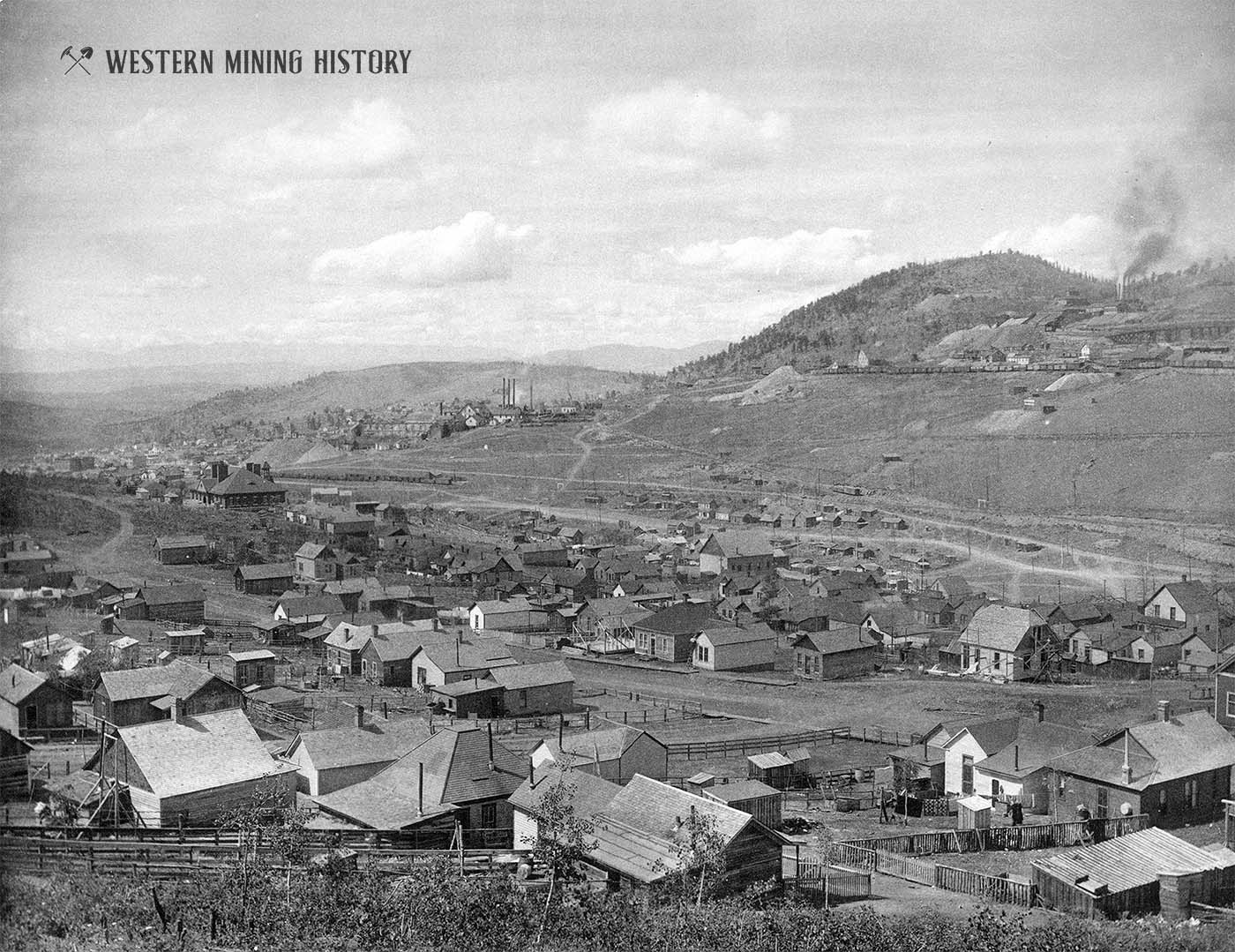Goldfield History
By Jan MacKell Collins
Of the many towns once located within the Cripple Creek District, Goldfield reached third largest in population during its time. While the city is now no more than a bedroom community of nearby Victor, Goldfield is recognized as one of the most active cities in the District during the 1890’s and early 1900’s.
The city lies at an altitude of 9903 feet on the outskirts of Montgomery Gulch, better known now as the Vindicator Valley. To the east, Big Bull Mountain hovers over Goldfield. To the west is the former town of Independence, surrounded by the ghost mines of Teresa, the Golden Cycle, the Portland #1 and #2, the Findley, the Independence, and the Vindicator.
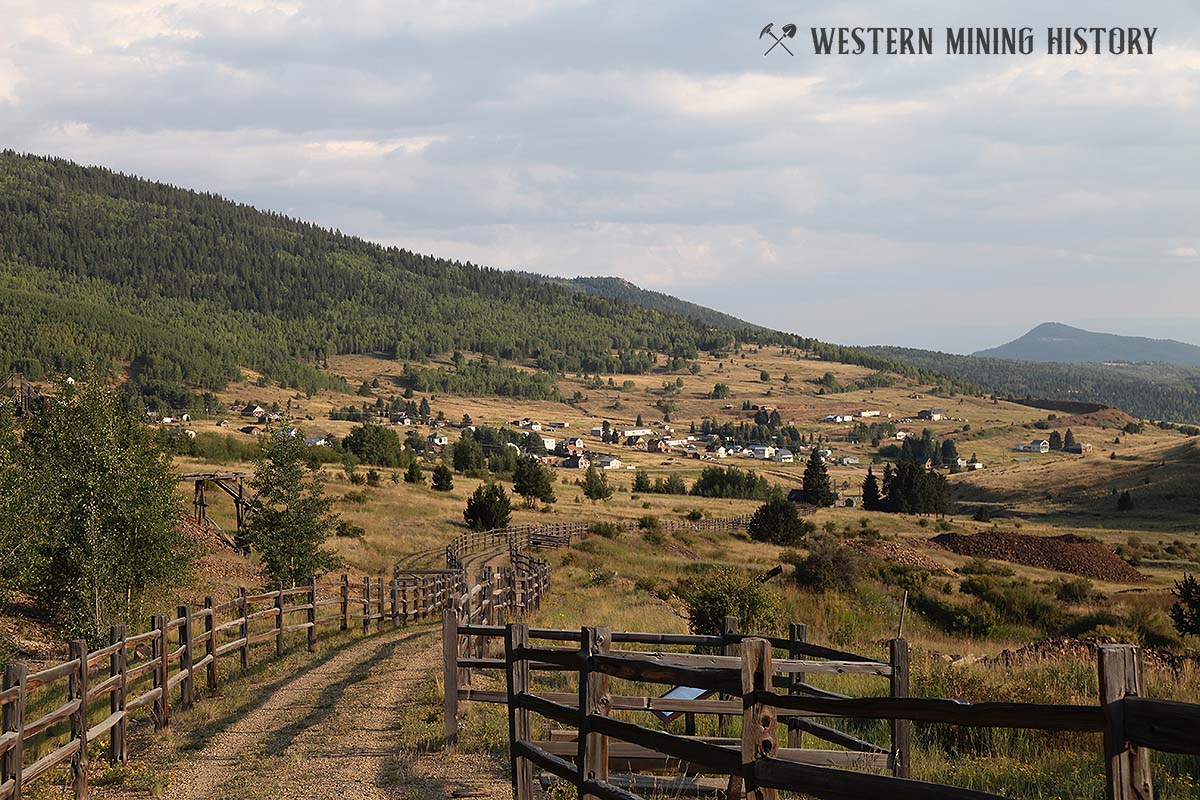
Goldfield’s beginnings date to 1894 when three men, James Doyle, James Burns, and John Harnan struck it rich with the Portland Mine. The Portland’s name was derived from Portland, Maine, where the “two Jimmys,” as they became known, grew up. With the Portland in full swing the partners decided to form their own town. The men established the Gold Knob Mining and Townsite Company on a large pasture where, some twenty years before, a forest fire had left an expansive clearing.
By the time the new town was platted in January of 1895, Burns and Doyle had wisely changed the name of Gold Knob to the more attractive name of Goldfield. Burns was put in charge of the company, laying out the streets and selling lots, starting at $25.00 each. A number of mining claims were also made on the future townsite; because of that, property was sold with surface rights only.
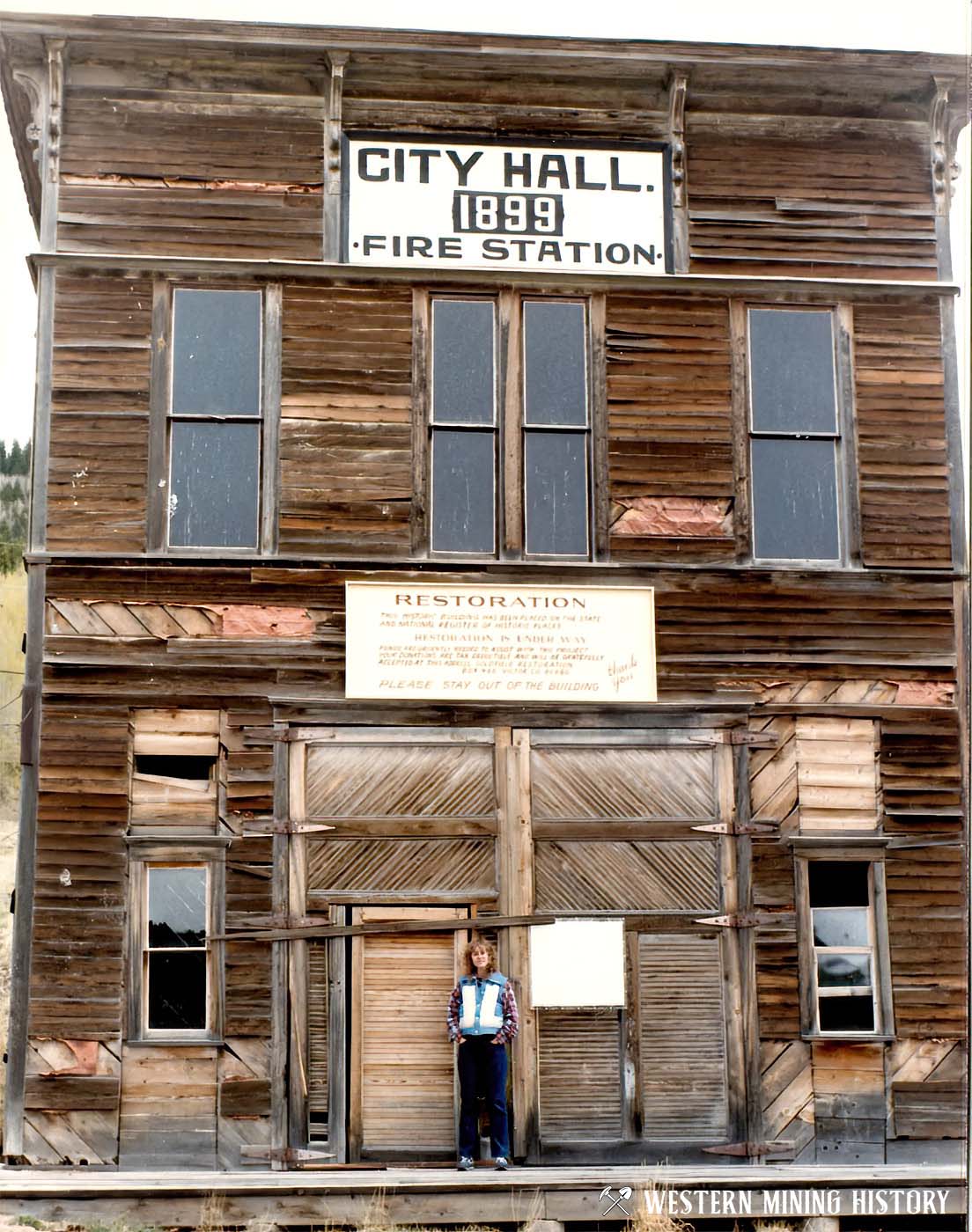
Goldfield’s post office opened on May 5, 1895. Referred to as the “City of Homes”, Goldfield was a family town. Modern, wooden sidewalks graced the streets, and in later years locals said the Sunday school was the longest running institution of its kind in the Cripple Creek District. Indeed, unlike the wild town of Altman just half a mile away, Goldfield’s citizens were far more interested in establishing schools and churches than saloons. Two newspapers, the Goldfield Gazette and the Goldfield Times, set about reporting news of the day.
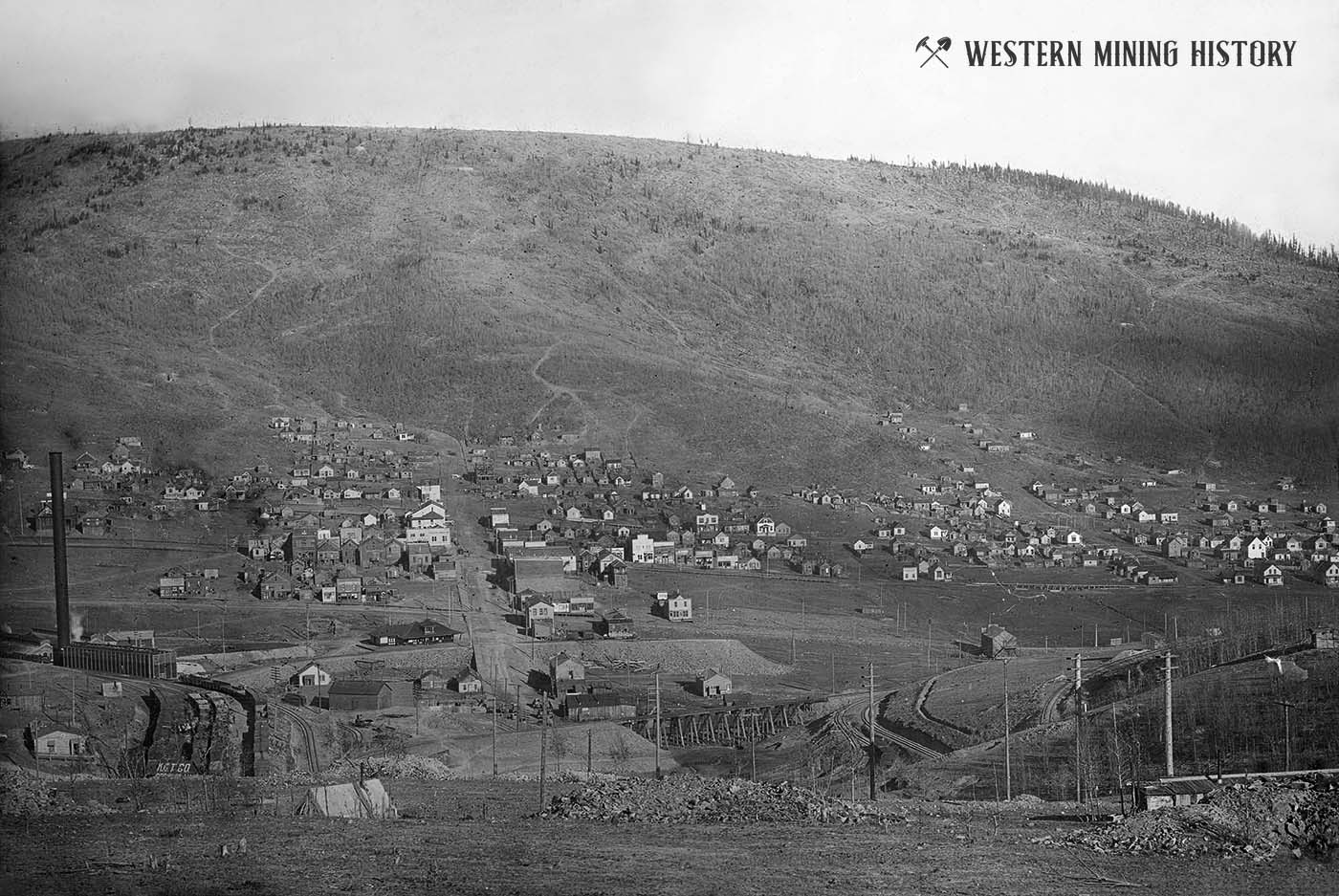
Not ironically, all of Goldfield’s town officials belonged to the Western Federation of Miners Union. Some of them had already been through a labor war in the district during the previous year. Perhaps the best-known union supporter in Goldfield was the first mayor, John Easter. There is no doubt that Easter was hoping for a civilized, prominent city in Goldfield. Not only did he immediately establish a fire department, but he also hired a city physician at $300 per year.
There was even a “pest house” for confining those with contagious diseases (and almost immediately, pest house attendant Albert Pheasants was fired for coming to work drunk.). Everybody, from the dogs of the town to the few saloons, had to have a license and prostitution was strictly outlawed. A town engineer was paid to maintain the roads at $10 per day.
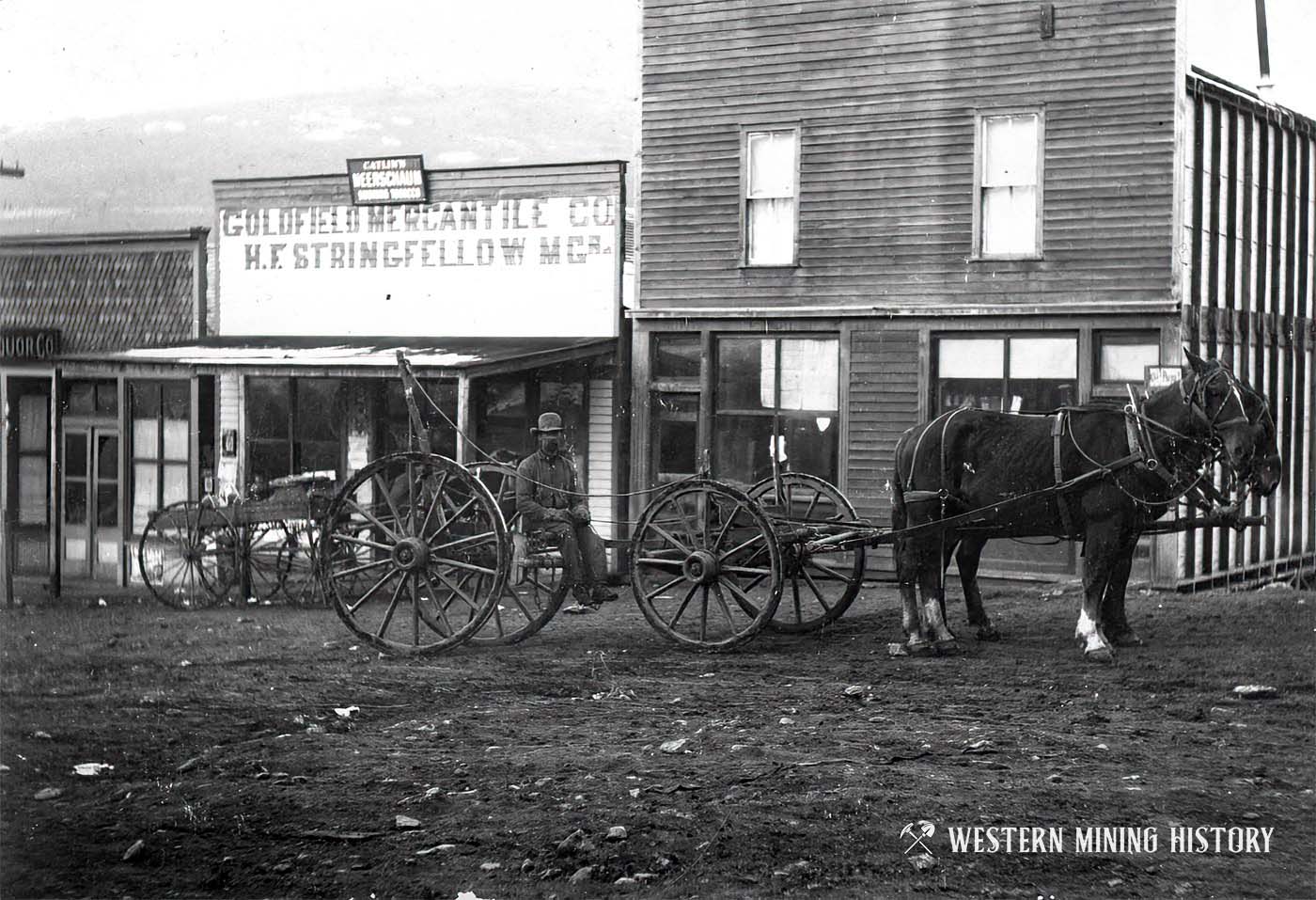
By the end of its first year, Goldfield had a population numbering 2,191 residents. This figure may have included the town of Independence, located across Montgomery Gulch and divided from Goldfield by the tracks of the Midland Terminal Railroad. Two of the main avenues, Independence and Victor, led to those two towns respectively.
By 1896 the population of Goldfield proper was a thousand people. A new mayor, Edward M. Sullivan, was elected as was a new marshal, Allen Combs. As with the pest house attendants, a city ordinance stipulated that the town marshal could be replaced if found too drunk to work. The ordinance was not without merit, since Goldfield had grown to include two assayers, an attorney, two boarding houses, one dentist, three groceries, one hotel, two meat markets, three doctors and three saloons.
A reservoir made use of several natural springs in the area, supplying water to ditches under the sidewalks and fire hydrants on every corner in town. The Florence & Cripple Creek Railroad reached Goldfield in November. Passenger service between Goldfield and Victor, a little over a mile away, commenced soon after.
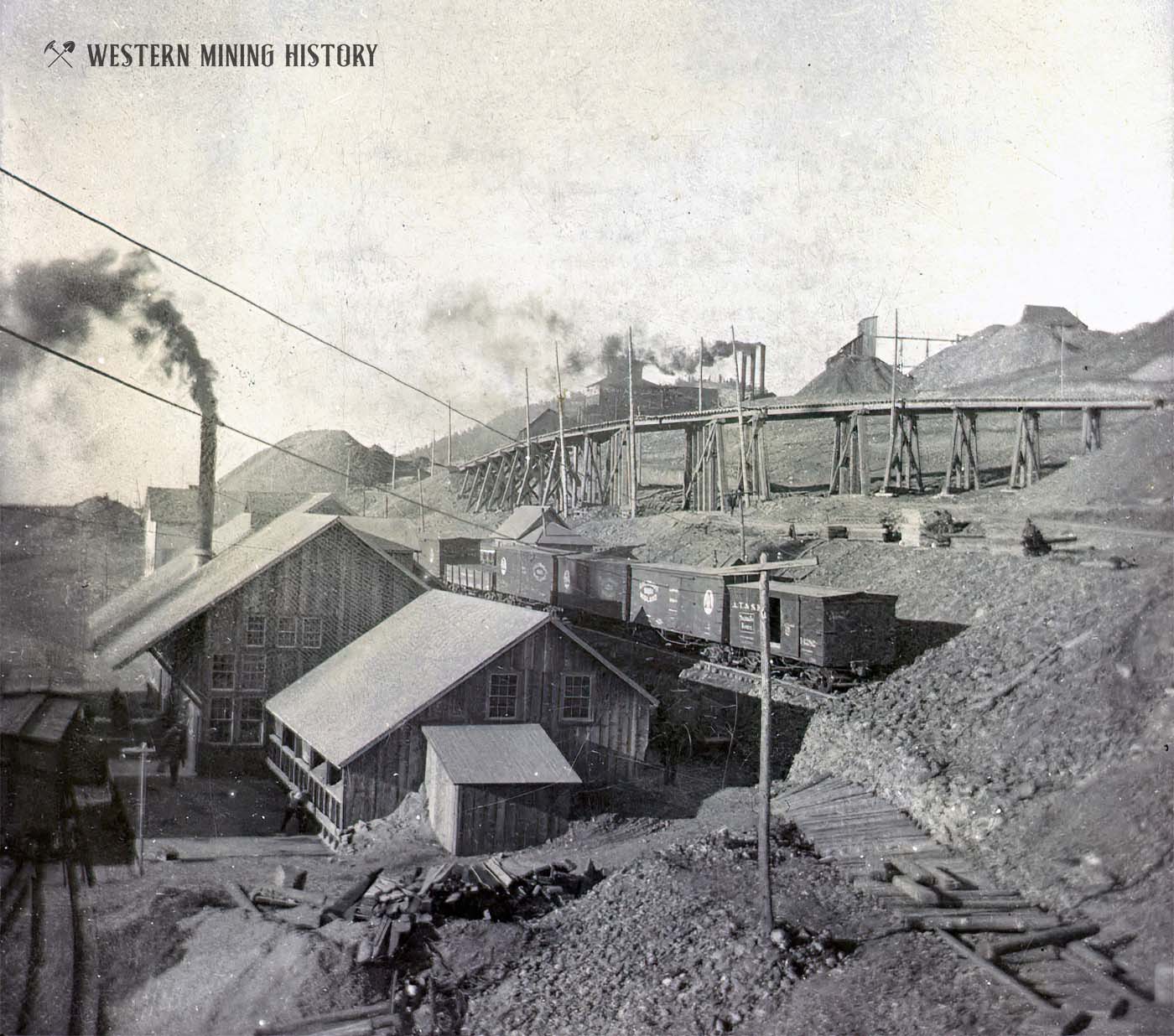
Goldfield continued to progress at a rapid rate through 1897. The F. & C.C. built a new depot, and by 1898 the city had street lights and telephone lines. The latter were provided by the La Bella Power Plant, constructed by railroad tycoon David Moffat. The plant was designed to provide power not just to Goldfield, but also to outlying towns and mines. Street car service was provided at five cents a ride. Those with their own transportation were made to obey the six mile-per-hour speed limit in town. Another city ordinance prohibited loud or profane language in public.
By 1898, Goldfield had reached its status as the third largest city in the Cripple Creek District. Water was supplied to the town of Independence across Montgomery Gulch. But Goldfield appears to be the exception to the typical frontier gold town. Social activities included lots of parades, picnics and concerts versus the usual saloons, shady ladies and shoot outs. In 1899, possibly in an effort to compete for the county seat of newly formed Teller County, Goldfield was officially incorporated. However, the loss of the county seat to Cripple Creek was not surprising.
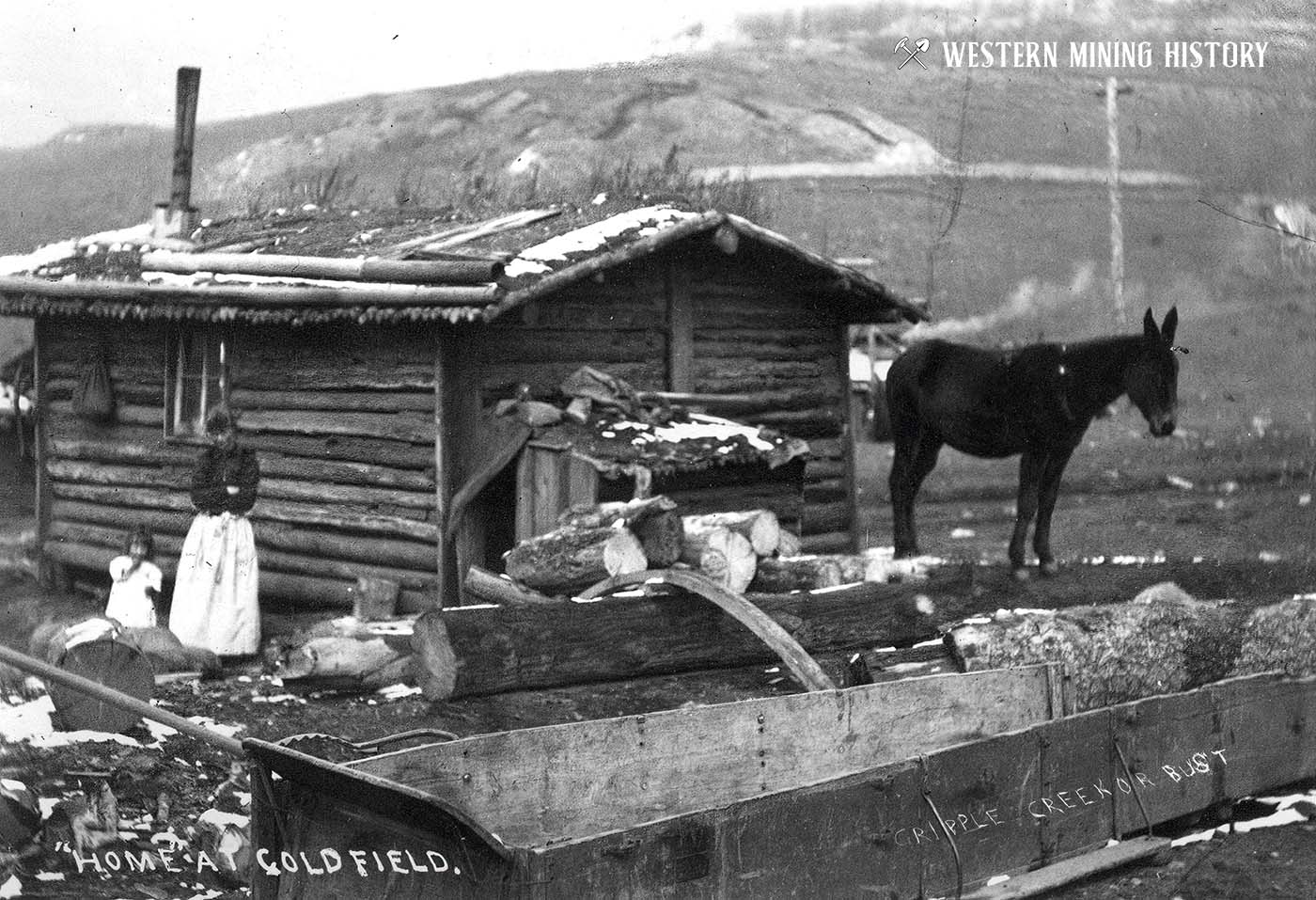
By 1900, Goldfield’s population had risen to 3500. The Cripple Creek District Directory described Goldfield as a “lively little city,” which it was. Homes ranged from simple miner’s cabins to gaudy Victorian architecture, and were well kept with nice lawns. Each resident was responsible for keeping the sidewalk in front of their home clean of debris and snow. A local junk dealer provided trash service. Seven boardinghouses, a variety of stores, nine groceries, five doctors, nine restaurants and nine saloons served residents. Clark’s Opera House provided nightly entertainment. There were also several societies, including a Masonic lodge and the Red Men.
Three railroads: the Florence & Cripple Creek, the Midland Terminal and the Colorado Springs & Cripple Creek District, afforded transportation. Twenty thousand tons of gold ore were being transported from Goldfield annually. In fact, it was estimated that three fourths of the ore shipped from the District went through Goldfield.
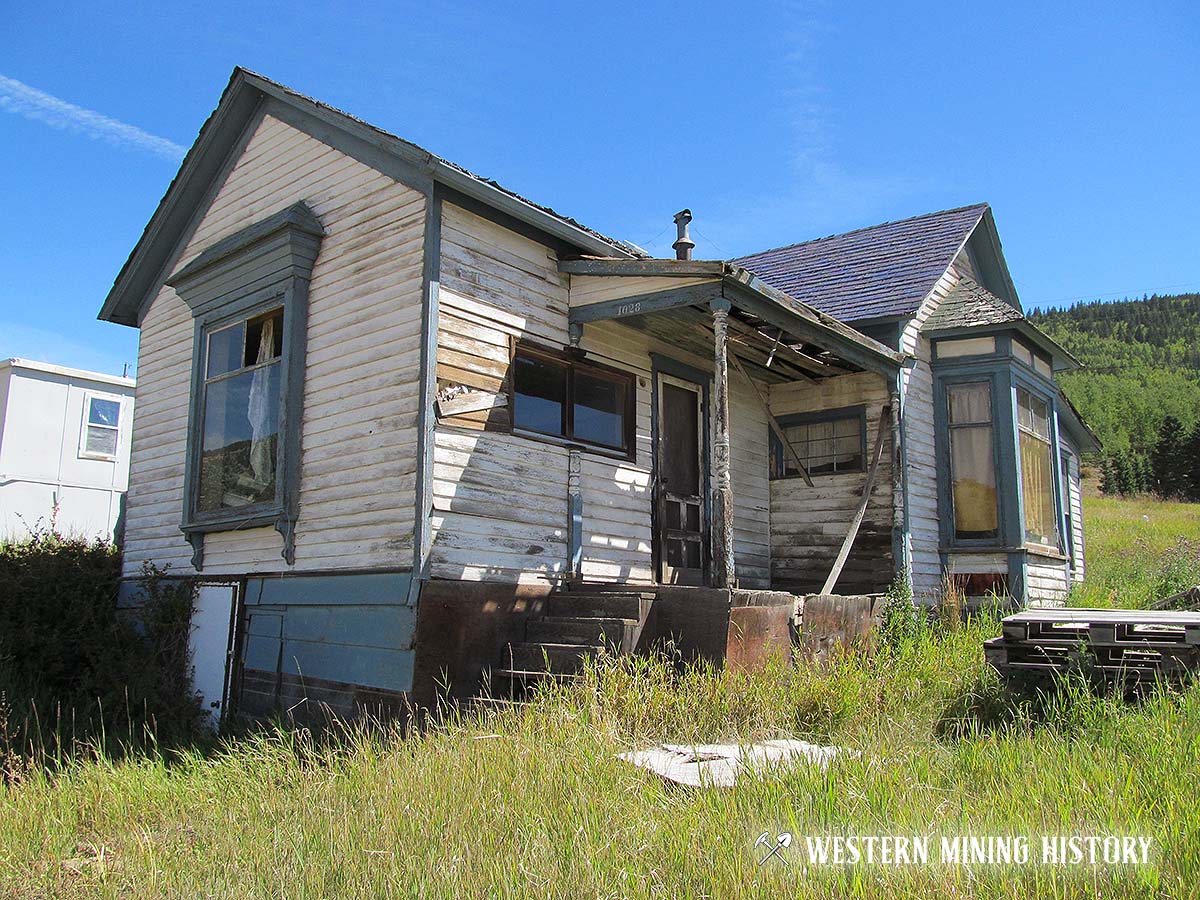
With all these amenities, it could be said Goldfield made an exemplary city, save for one tiny incident. A Miss Luella Vance of Goldfield served papers on mining magnate Sam Strong at the close of his wedding to another woman. Luella’s claim was one of many imposed on Strong, a philandering womanizer and a drunk besides. Miss Vance received $50,000 to aid in the mending of her broken heart.
From all appearances, Goldfield retained its union status as a second labor strike loomed on the horizon in 1903. Interestingly, there does not appear to have been much strike activity within city limits. In fact, it would appear that rather than witness messy fisticuffs and battles within its refined city limits, Goldfield chose to handle things outside of town instead.
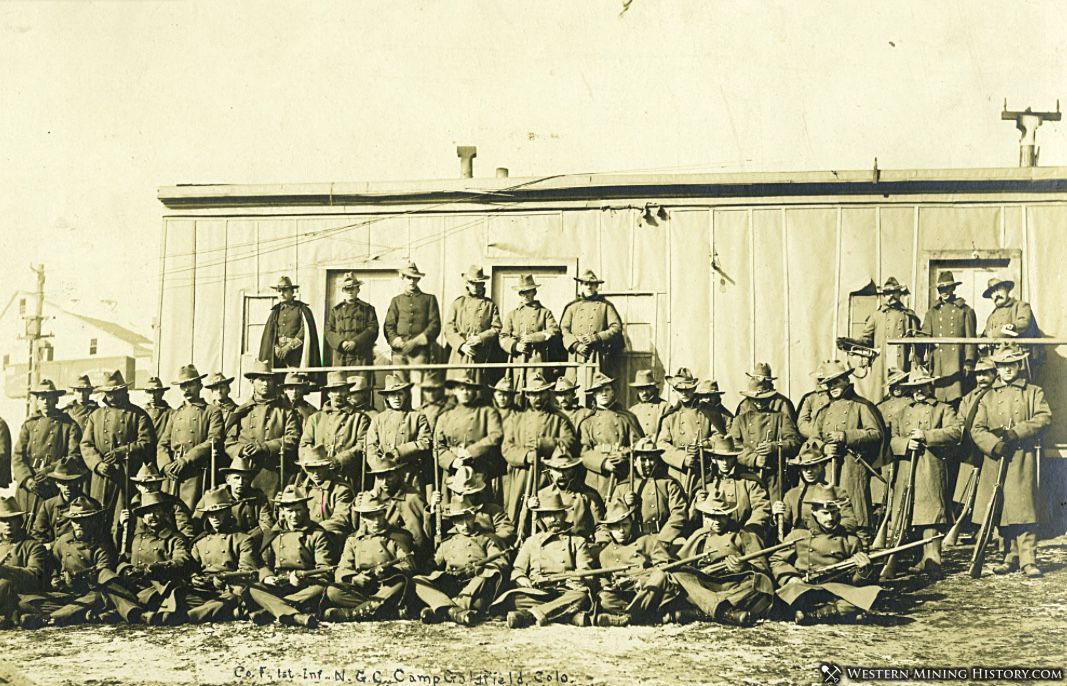
When the National Guard was called to Battle Mountain in the midst of the strike, they quartered just above Victor. Yet a photograph of the settlement is identified as “Camp Goldfield.” Furthermore a “bull pen” was erected to imprison striking miners nearby, safely outside city limits. Even so, a number of citizens left town for safer pastures. One man named Jack Ried, however, worked as the town marshal after being shot during labor war scuffle in Victor. The injury resulted in the amputation of Ried’s leg. In Goldfield, he was fondly referred to as “Peggy.”
By the end of the strike in 1904, about half the homes of Goldfield were empty, just like they were at Altman and Independence. Of the three cities, however, Goldfield alone elected to start fresh. Accordingly, non-union citizens impeached the union city officials. Elected in their place were officers who played neutral parts in mining activities. By 1905, Goldfield was holding steady with a population of 3000. There were still three churches, four social halls and seven lodges, although a number of other businesses had fallen to the wayside. The last of the city’s many newspapers, the Goldfield Crescent, closed down its press in 1909.
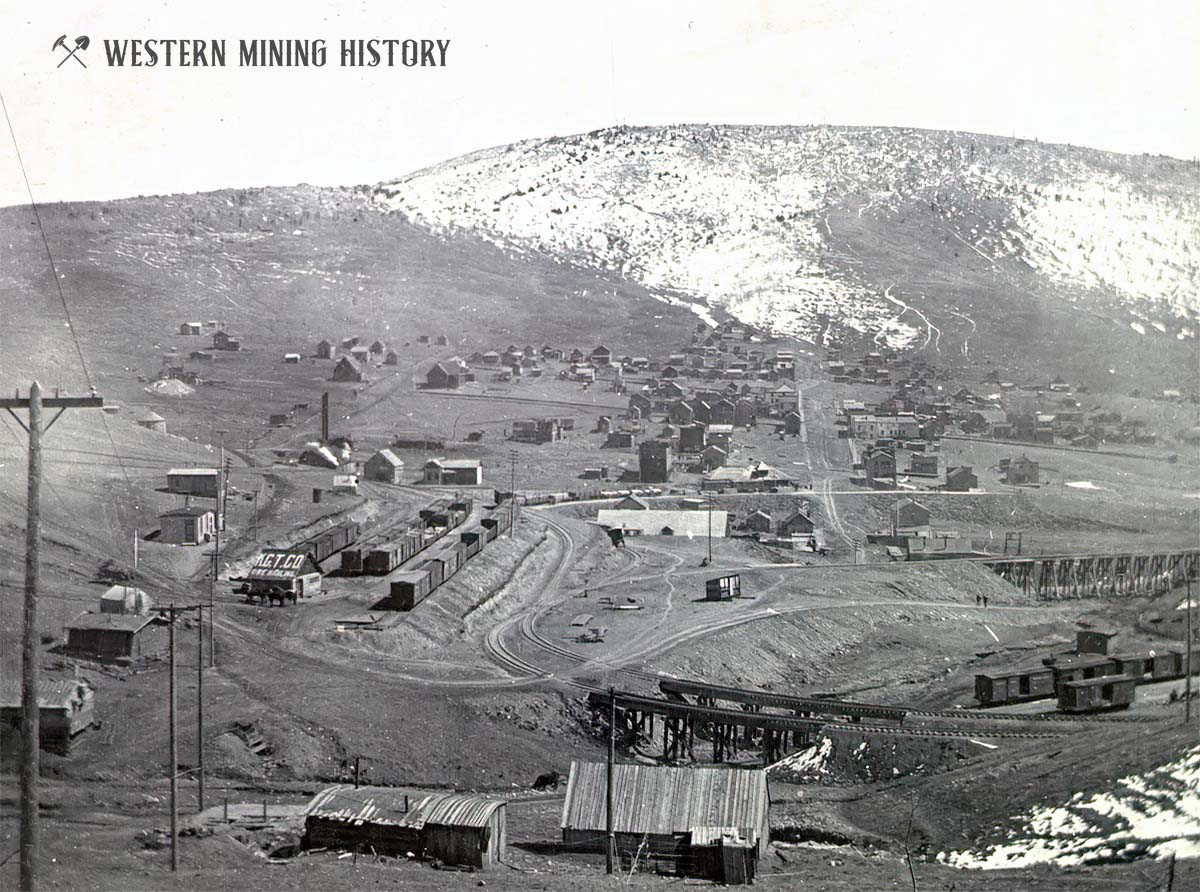
As the mining boom of the 1890’s subsided, Goldfield’s population was dropping steadily by 1911. The business district dwindled down to one assayer, one barber, one dairy, four stores, four groceries, two meat markets, one doctor and two saloons. The downsizing was accented by the death of John Easter in 1914. Nearly every citizen of Goldfield accompanied the first mayor’s body to his burial at Sunnyside Cemetery.
Somehow, Goldfield stayed busy during the waning years of the gold boom. By 1915 the population was holding steady at 1,200, and new businesses in town included three auto garages – the start of a whole new era. Two churches and three lodges were still functioning, and little else changed save for the abolishment of the saloons with statewide prohibition in 1917.
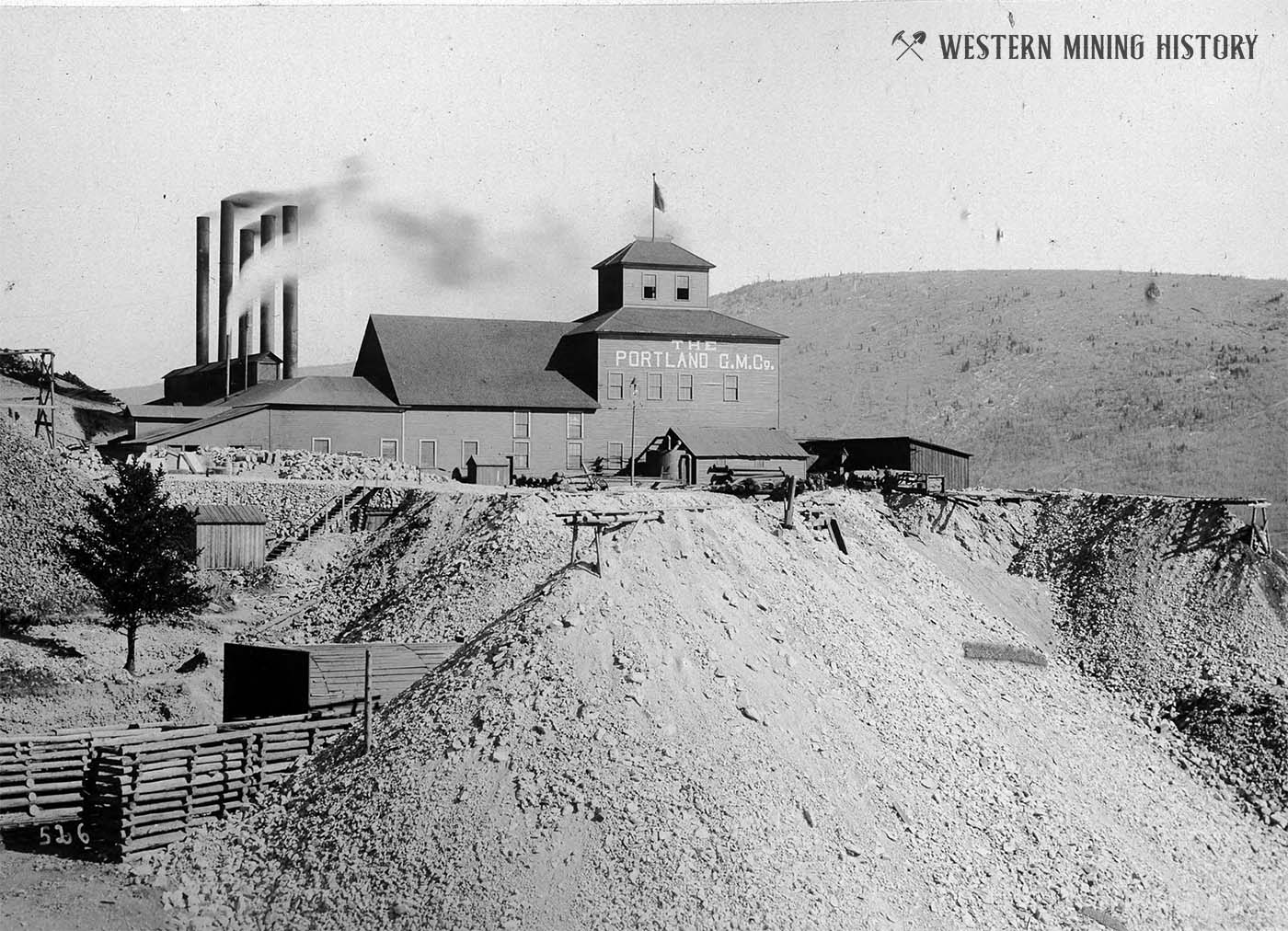
With time, however, the whole district slumped as the mines slowly became too expensive to operate. The wooden sidewalks in Goldfield slowly disappeared. As they rotted or fell away, a popular pastime became searching the ditches underneath for long lost money or other items. It is said even a few gold coins surfaced on occasion. But Goldfield was slowly being forgotten. The post office officially closed in 1932, a book chronicling the infamous labor wars neglected to even mention Goldfield. Even the Cripple Creek Times Record stopped publishing Goldfield news after 1939.
By 1954, only 60 people still called Goldfield home. One of them was miner Rufus Porter, aka The Hard Rock Poet. Porter first came to the district in 1917. Now, he was writing a column for the Colorado Springs Gazette Telegraph, penning poems about the old days in the Cripple Creek District, and publishing his own set of history booklets. Among the characters in Porter’s Goldfield memoirs was Jack Condon, who once fought Jack Dempsey in Victor. It also was according to Porter that long after Goldfield ceased electing mayors, one Billy Butler became an honorary mayor for a number of years. Butler was also a former miner, and described as having a good heart and being respected by all who knew him. Upon retiring, Butler purchased a mimeograph machine and published his own newsletter.
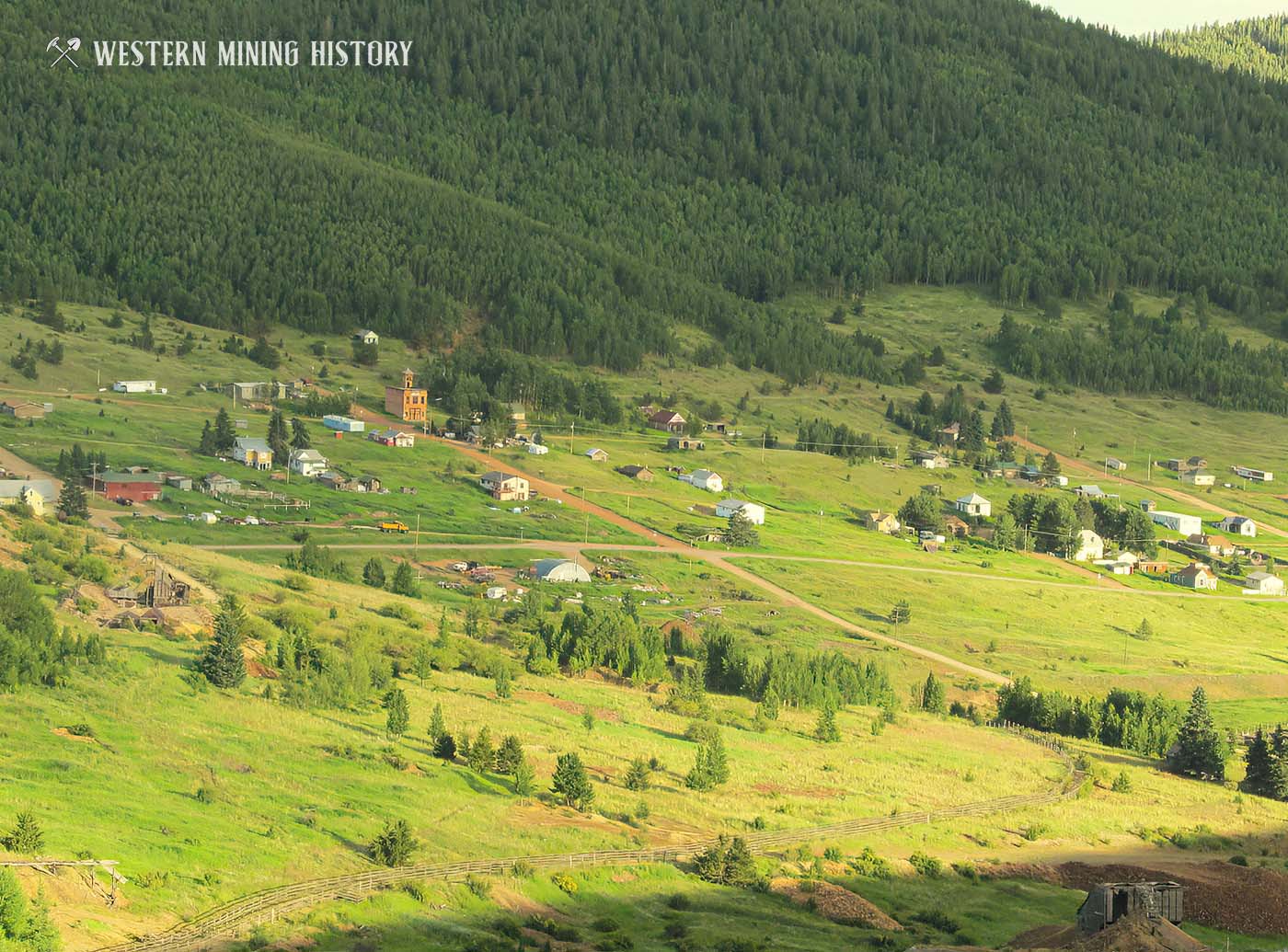
Thirty-five people, including Porter, still lived in Goldfield during 1969. At that time Goldfield’s businesses had all closed, and it was officially considered a ghost town. Yet the city hall still contained its huge safe with “City of Goldfield” etched in gold leaf on its door. A few years later, however, the City Hall had been relieved of its safe, as well as valuable documents and ledgers, which began appearing for sale on various websites. In the meantime, some of the remaining homes and buildings began swaying with time. Some fell with an unheard sigh into the weeds around them. Still others retained much of their original flavor, lovingly looked after by the residents within.
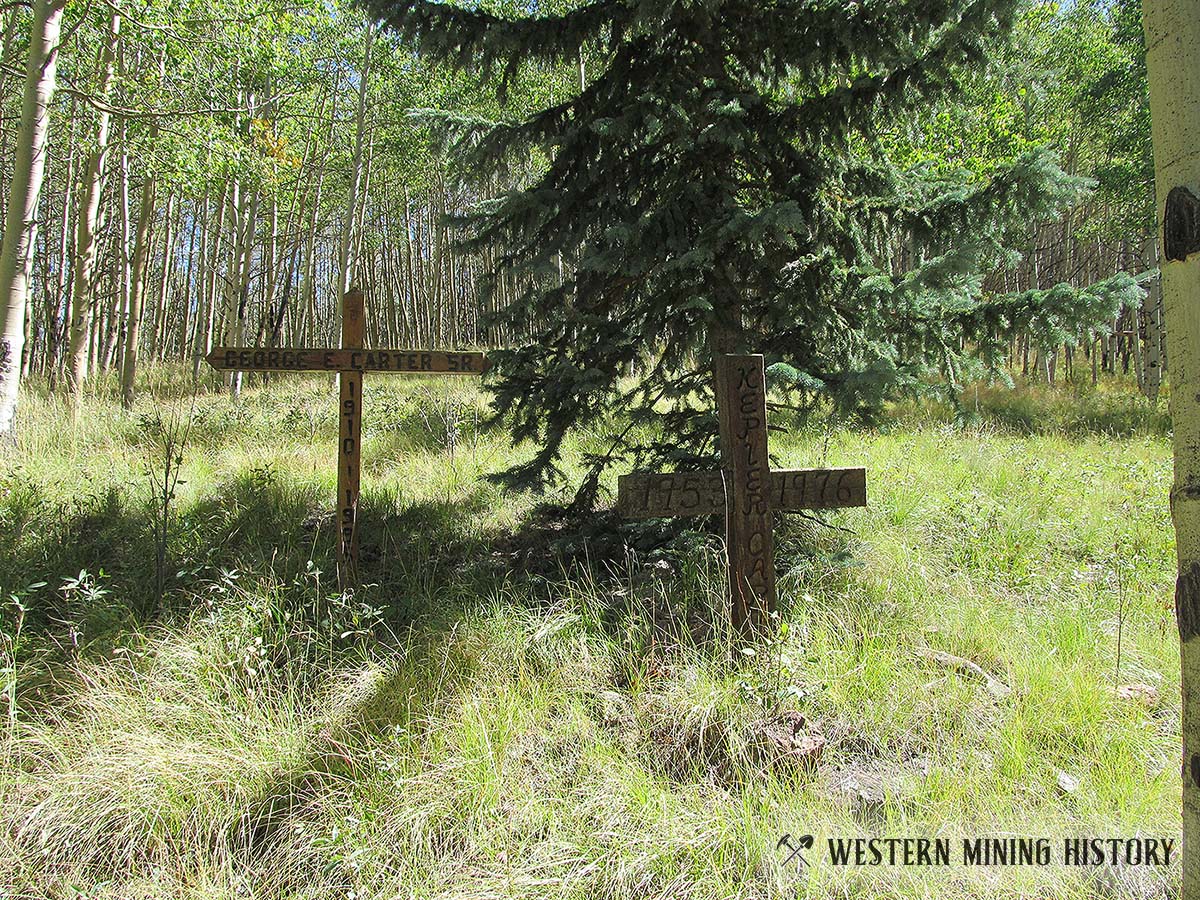
Today, Goldfield’s city hall and fire station still stand. In the last forty years alone, citizens have garnered support for the preservation of Goldfield in the way of the Goldfield Restoration Association, along with assistance from the Cripple Creek District Museum and the Victor Lowell Thomas Museum. Thanks to their efforts, Goldfield remains as a charming bedroom community, its history intact.
A Tour of Colorado Mining Towns
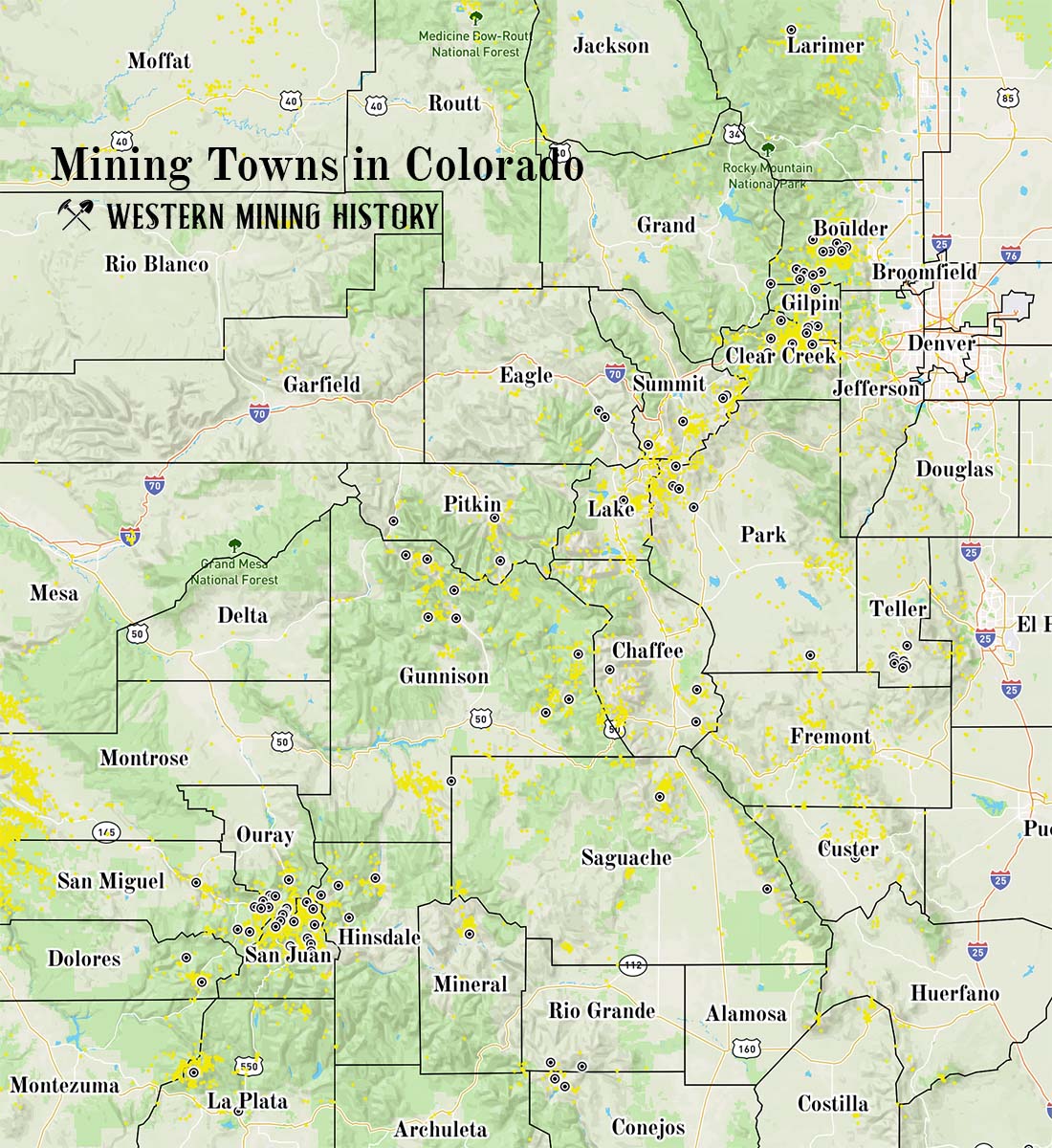
Explore over 100 Colorado mining towns: A tour of Colorado Mining Towns.
Colorado Mining Photos
More of Colorado's best historic mining photos: Incredible Photos of Colorado Mining Scenes.
